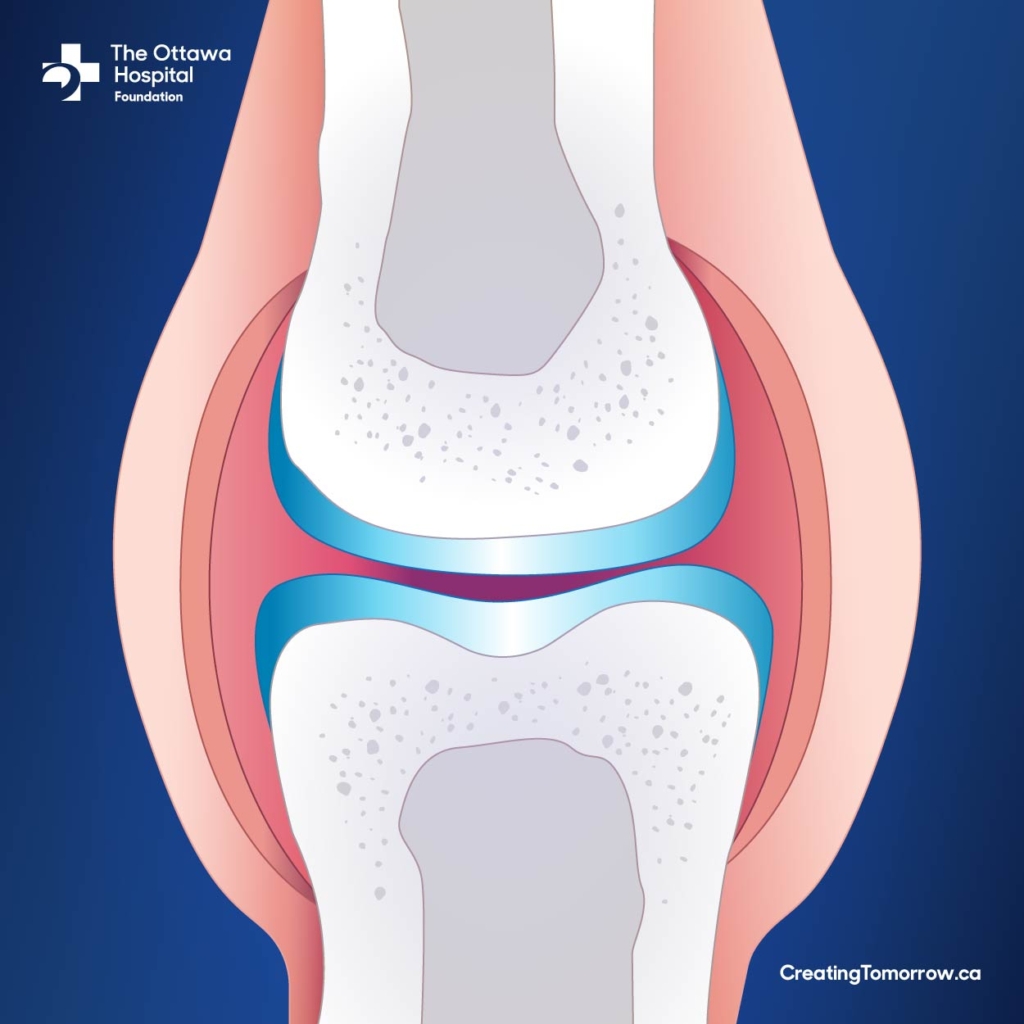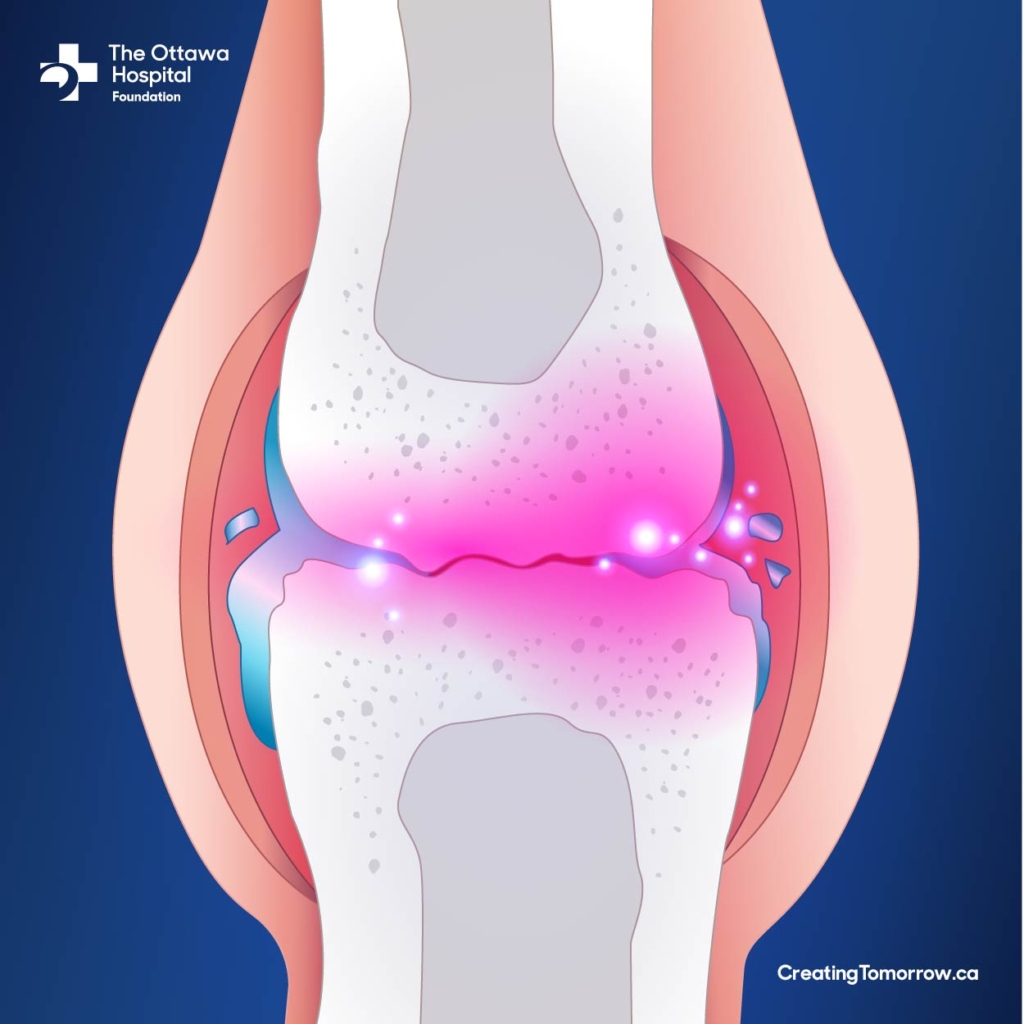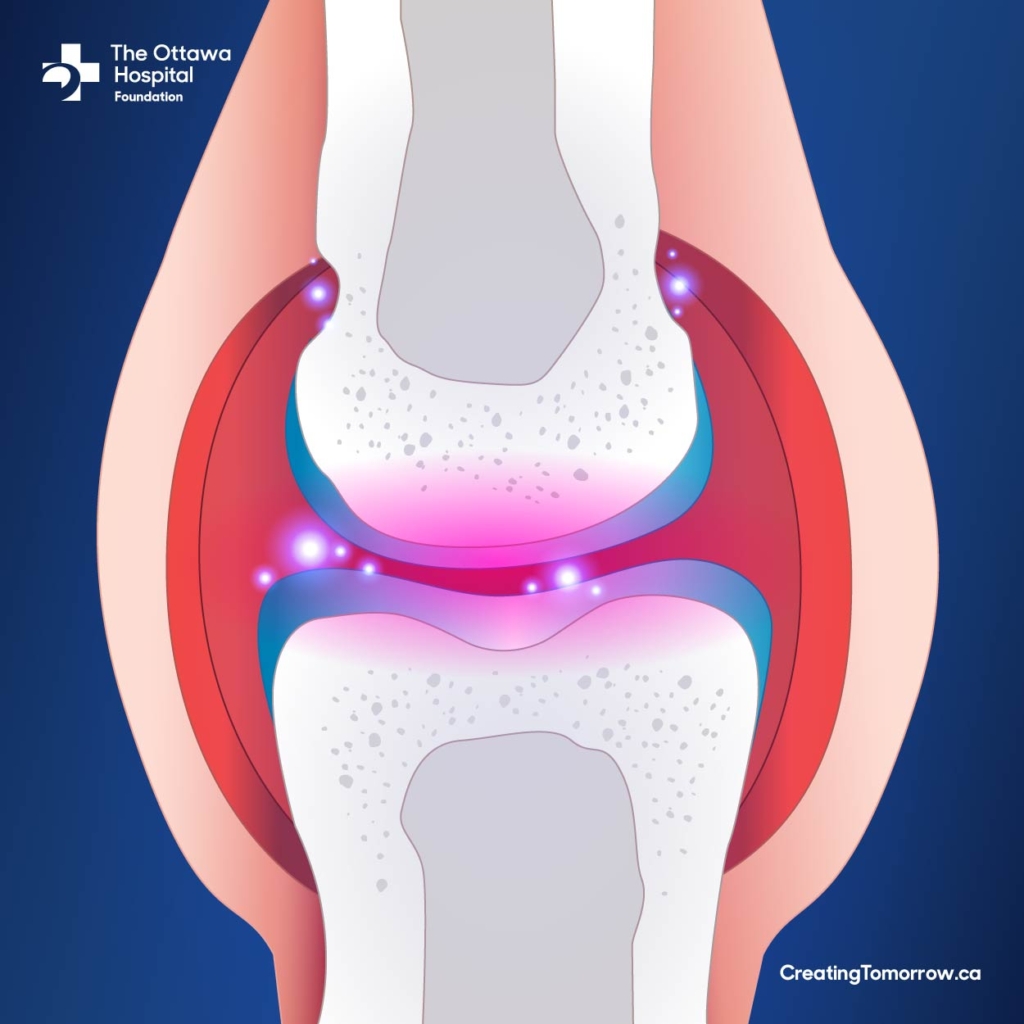
All about rheumatoid arthritis
When you hear the word arthritis, chances are you picture something that happens when you get older, maybe stiff fingers or knees. But arthritis isn’t just one thing; it actually describes more than 100 different conditions, and it doesn’t just appear with aging.
One of the most common types, and yet one of the more mysterious, is rheumatoid arthritis.
But why is it mysterious, and who gets it?
What is rheumatoid arthritis?
Rheumatoid arthritis is an inflammatory form of arthritis in which the immune system mistakenly attacks healthy joints, specifically their lining. This inflammation can cause swelling, pain, and stiffness in the joints. It can affect other areas of the body, too, including the skin, eyes, lungs, heart, and blood vessels.
Why the immune system malfunctions in the first place is unknown and could be due to a complex number of factors, including genetic, hormonal, and environmental causes.
Who gets rheumatoid arthritis?
Rheumatoid arthritis is one of the more common type of arthritis, and around 1% of Canadians have it. Some risk factors include a family history of it, smoking tobacco, and obesity. Women are three times more likely than men to experience rheumatoid arthritis, and while in most cases the onset occurs between the ages of 20 and 50, it can appear at any age. In rare cases, rheumatoid arthritis can even start in childhood, in which case it is usually diagnosed as a form of juvenile idiopathic arthritis.
Getting her life back
What is Juvenile idiopathic arthritis?
Juvenile idiopathic arthritis (JIA) describes any form of arthritis that appears in someone under 16. Formerly known as juvenile rheumatic arthritis, the name changed because it’s not simply a version of the adult disease in younger people. The idiopathic in the name actually means the origins are not entirely clear. There are seven subtypes of JIA that share similar symptoms, including joint pain, swelling, and stiffness. Many children will outgrow JIA, but some will not.
In some cases, JIA will develop into adult rheumatoid arthritis.
How do you treat rheumatoid arthritis?
There is no cure for rheumatoid arthritis, but there are medications and treatments that can help people manage their symptoms. Some of these options include:
- Medications that decrease inflammation, pain, and swelling in the joints — often steroids.
- Medications that modify your immune system
- Lifestyle changes, including: maintaining a healthy weight, physical activity, and protecting your joints at work or recreation.
- Surgery to reduce pain and restore function or improve mobility in affected joints. Some surgeries to treat rheumatoid arthritis include knee and hip replacements, synovectomy (the removal of the lining of the joint if it’s inflamed and causing issues), and surgery to correct a deformity caused by the arthritis — especially if present since childhood.
Often a combination of treatments, including multiple medications, has the greatest impact on patients with rheumatoid arthritis.
What are the other types of arthritis?
At its most basic, arthritis describes a range of conditions that involve the inflammation or swelling of joints. Some of the other, main types of arthritis include:
- Osteoarthritis is the most common type of arthritis, affecting more Canadians than all other types combined. About one in seven Canadians over the age of 20 lives with osteoarthritis. Osteoarthritis is a progressive condition in which the cartilage and bone in a joint break down. This can be caused by heavy usage of joints, such as from carrying heavy loads or working physically intensive jobs for years, or from injuries, having joints that are formed differently, or having a high body weight. It is significantly more common as you age.
- Gout is a very painful form of arthritis caused by a build-up of uric acid crystals in a joint, usually the big toe. It is caused by the kidneys not breaking down a chemical called purine fast enough and is mostly managed through dietary changes. About 2-4% of Canadians have gout, and it is about four times more common in men than in women.
- Psoriatic arthritis appears in people with the autoimmune disorder psoriasis, which primarily impacts skin. This form of arthritis can affect the skin, joints, and areas where tissue connects to bone. About 2-3% of the population has psoriasis, and up to 30% of those people will develop psoriatic arthritis.


HEALTHY JOINT
- Healthy bone and cartilage
- Normal synovial membrane

OSTEOARTHRITIS
- Bone ends rub together
- Thinned cartilage

RHEUMATOID ARTHRITIS
- Cartilage degradation and bone erosion
- Swollen, inflamed synovial membrane
What is The Ottawa Hospital doing to help patients with rheumatoid arthritis?
We have world-class researchers studying rheumatoid arthritis here at The Ottawa Hospital to help improve treatment options and care for patients. In 2021, rheumatologist Dr. Peter Tugwell was listed in the top 1% of the world’s highest-cited researchers. Dr. Tugwell is a global pioneer in health equity and knowledge translation, bringing research discoveries today to patients tomorrow. And as a scientist at The Ottawa Hospital, Dr. Paul Beaulé is drastically improving hip surgeries and patients’ quality of life. Rheumatologist Dr. Sibel Aydin’s research uses imaging technology, like ultrasound and functional MRI, to understand pain mechanisms and exactly which joints, tendons, or ligaments are affected by the disease.




